Short-and long-term performance of TTC floor system
In this project, short-term pushout tests were performed on LVL/GLT beam to CLT slab joints (with coach screw shear connectors) to characterise the load-slip, peak load, and failure mode of the joints.Furthermore, material tests were conducted on timber and the screws, and the results were used to build a versatile beam on inelastic foundation finite element (FE) model and predict the full range load-slip response of the TTC joints.
To assess the long-term performance of the TTC system, twelve TTC joints and eight full-scale TTC beams were fabricated by connecting LVL/GLT beams to CLT slabs. The TTC joints and beams were subjected to sustained (constant) loads and monitored under an indoor uncontrolled environment for over 500 days. The test results revealed the major influence of the CLT slab thickness and orientation (crosswise or lengthwise), shear connector types/sizes and CLT slab continuity (segmentation) on the long-term performance of the TTC joints and beams.
Lastly, a 3D fully coupled finite element (FE) model implemented as user-defined subroutines in ABAQUS/Standard was validated against the TTC joints and beams long-term test results and accordingly input parameters for long-term FE simulations of the LVL-CLT and GLT-CLT composites (with screw shear connectors) are recommended.
Short-term
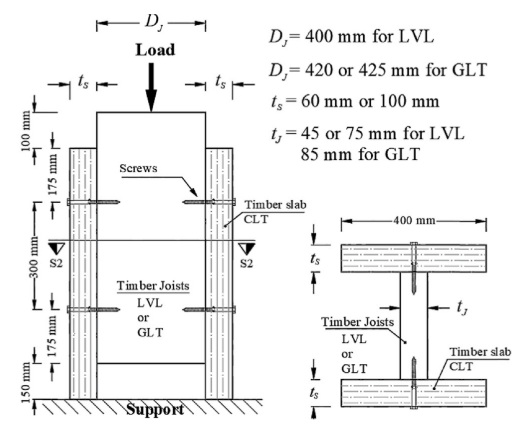

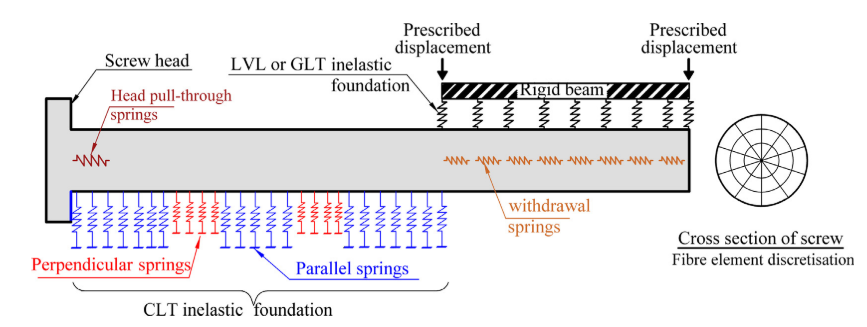
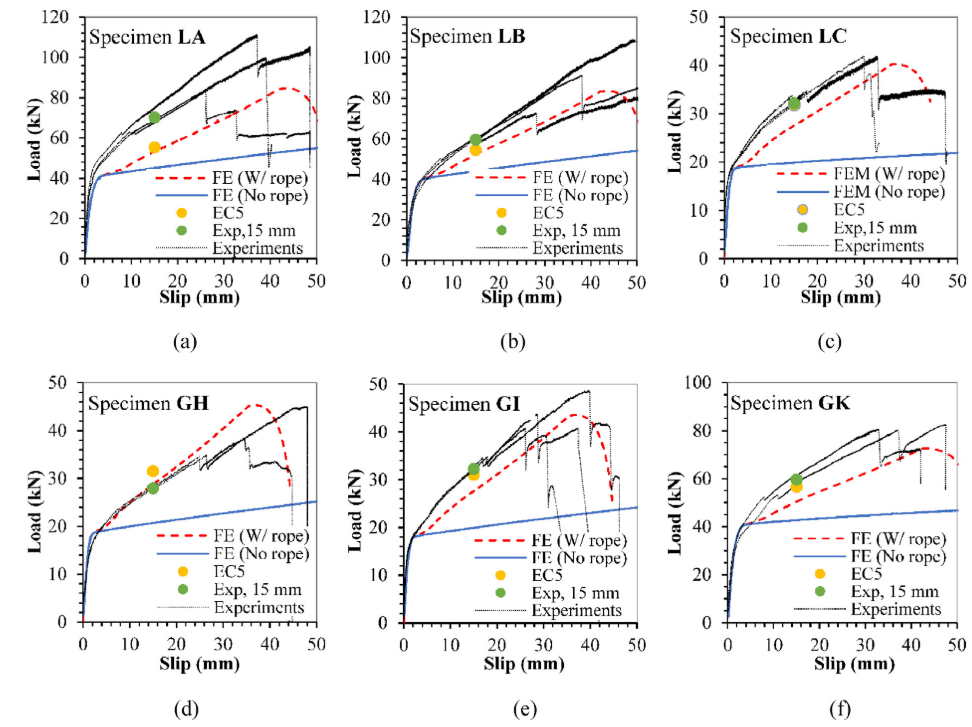
Long-term
You can also put regular text between your rows of images. Say you wanted to write a little bit about your project before you posted the rest of the images. You describe how you toiled, sweated, bled for your project, and then… you reveal its glory in the next row of images.
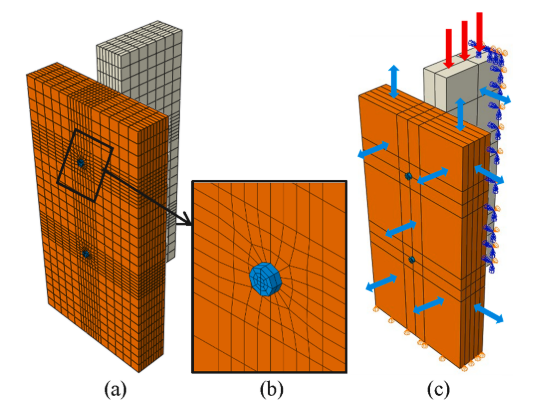
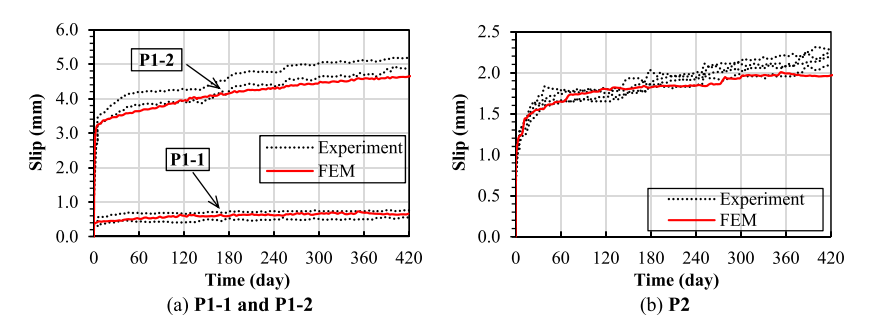
The 3D coupled FE models can adequately capture the long-term behaviour of TTC joints with screw shear connectors under sustained load and variable environmental condition.